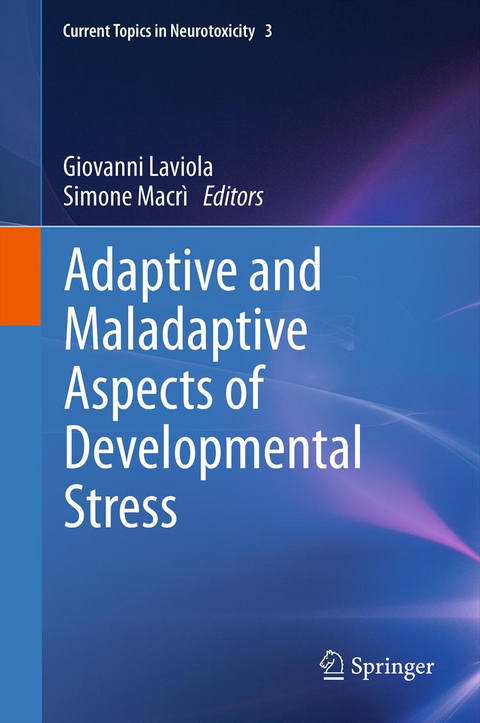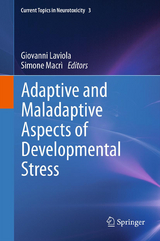Adaptive and Maladaptive Aspects of Developmental Stress
Springer-Verlag New York Inc.
978-1-4614-5604-9 (ISBN)
What is stress good for?
Since the very early stages of life, we all experience some form of stress. Stressors can be mild to severe and can range from unsuccessfully longing for maternal milk in infancy, to recklessly wiggling on a motorbike to be on time to watch the NBA finals on TV, to breaking up a relationship.
All those events that we call “stress” have the capability of perturbing a given state of psychological and physiological equilibrium and moving it to a different level. The transition from crawling to walking has to be considered a form of stress as much as losing a job.
It is through a continuous cross-talk between environmental stressors and individual adaptations that we build our personalities and our ways to cope with daily hassles. External challenges should not necessarily be regarded as “bad”, but instead seen as constructive forces forming our ability to navigate a changing world.
What is stress good for? What is stress bad for? When and why do we need to be “stressed”? Should we worry about stress? When does stress equate to “normality”? When does it turn into pathology? We hope with this book to provide some answers to these fundamental questions.
Making Sense of Stress: An Evolutionary-Developmental Framework.- Prenatal and maternal psychosocial stress in primates: adaptive plasticity or vulnerability to pathology?.- The Everyday Stress Resilience Hypothesis: Unfolding resilience from a perspective of everyday stress and coping.- Ontogeny of stress reactivity in the human child: Phenotypic flexibility, trade-offs, and pathology.- Consequences of Developmental Stress in Humans: Prenatal Stress.- Consequences of Developmental Stress in Humans: Adversity experienced during Childhood and Adolescence.- Behavioural and neuroendocrine consequences of prenatal stress in rat.- Developmental consequences of prenatal administration of glucocorticoids in rodents and primates.- Early developmental trajectories of brain development: New directions in the search for early determinants of health and longevity.- Adaptive regulations in developing rodents following neonatal challenges.- Adaptive and maladaptive regulations in response to environmental stress in adolescent rodents.- Oxidative stress and hormetic responses in the early life of birds.
| Reihe/Serie | Current Topics in Neurotoxicity ; 3 |
|---|---|
| Zusatzinfo | XII, 281 p. |
| Verlagsort | New York, NY |
| Sprache | englisch |
| Maße | 155 x 235 mm |
| Themenwelt | Medizin / Pharmazie ► Medizinische Fachgebiete ► Neurologie |
| Medizin / Pharmazie ► Medizinische Fachgebiete ► Psychiatrie / Psychotherapie | |
| Medizin / Pharmazie ► Studium | |
| Naturwissenschaften ► Biologie ► Humanbiologie | |
| Naturwissenschaften ► Biologie ► Zoologie | |
| ISBN-10 | 1-4614-5604-5 / 1461456045 |
| ISBN-13 | 978-1-4614-5604-9 / 9781461456049 |
| Zustand | Neuware |
| Haben Sie eine Frage zum Produkt? |
aus dem Bereich




